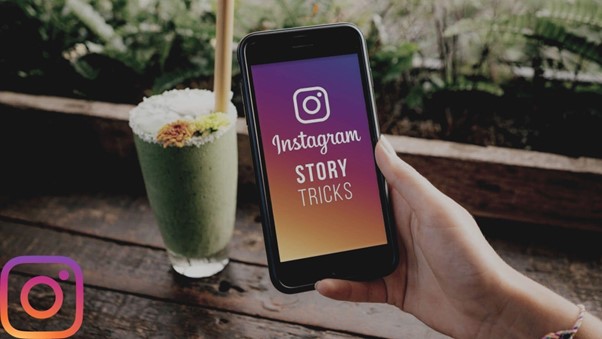How Does Instagram Organize Story Views?

Did you know that we have had Instagram stories for six years now? They were launched in 2016 and have continued to form a huge part of how people use Instagram ever since.
Do you ever look at who is viewing your stories and wonder what order Instagram is displaying them in? Sometimes it looks like there is a pattern, but sometimes it looks totally random.
Don’t worry, we’re explaining the method to the Instagram madness in this guide.
What Is an Instagram Story?
As you may already know, a Story is a type of post on Instagram. Different from a post, it appears in a different type of feed, which is right at the top of the display when you open your Instagram app.
Stories are temporary, so they disappear after 24 hours. This type of post is also time-limited at 15 seconds, though recently, Instagram has experimented with longer times, such as 60 secs.
The top menu where the stories appear is also where a Live broadcast shows, so if you are trying to get more viewers on your streaming, this is the place to keep checking the view count. Stories can also be a place to share information such as links and even embed your posts, so a lot of people use this type of post to further promote their channel.
How Instagram Organizes Views

After you post a Story, you will be able to see who has looked at it. This only applies if you are the creator (so, not everyone can see who is viewing each other’s stories, you can only see your own viewers). The part of the post where you see your own viewers is referred to as the watchlist.
Basically, the display of the usernames on this watchlist depends on how many viewers you get.
- If your Story gets 50 or less views, then the watchers are organized in reverse chronological order. You see the most recent viewer at the top.
- If the views are over 50 then Instagram detects this and changes an algorithm.
Of course, it makes sense to get more views if you currently don’t hit the 50 per Story. More people will see the post if you have more followers, and you can buy Instagram Live views to jumpstart your channel, which means that you can test out the algorithm for yourself.
If you get enough views to reach the algorithmic threshold, the viewers are then arranged in a totally different way to reverse chronology. If you are used to Instagram, think of this a bit like the algorithm that dictates where things display on your feed. A similar sort of algorithm is in place on sites like Twitter.
The public doesn’t know the way the algorithm works; this is left to the insiders at Instagram. However, it is clear that it depends on the other interactions you have had with those users that view the story.
Put it this way, if you constantly have discussions with someone, like their posts, and even tag them in things, it seems much more likely that they will appear towards the top of the watchlist.
Why Does Instagram Do Things This Way?
Well, it makes sense that they show people interactions with those that they usually talk to and react to. While someone might not really care if someone who follows them, with whom they don’t actually talk to or even know, should view their story, they will care if their best friend does.
The Instagram algorithms are all about relevancy. Think about the ways that the posts you see are organized. It tends to be the case that you see the posts that are most interesting to you pretty quickly.
Historically, social media websites, including Facebook (now run by the same people as Insta, of course), have put a lot of weight on chronology. Now, if you look at your feed on Facebook, then it is possible that the posts that are highest are not the most recent but are those that Facebook’s algorithm “decides” you want to see.
The company spends a lot of time and resources creating the technology that drives this because it is valuable for individuals and businesses.
Why Check Story Views?
What is the point in checking the views anyway? Well, of course, there are people who do this purely to make sure they are being seen by certain people.
If you’re posting a picture from the beach and want to make sure your friends have seen where you are, then you can see whether you’ve been spotted.
For businesses, this is even more crucial. You may want to check that plenty of people is seeing your stories and engaging. You may even want to check the profiles of some of the people who are regularly checking out your content. This can be a key tool to making sure that you build a ‘fanbase,’ for instance.
If you are putting the time and effort into making quality content, analyzing who is engaging with it may be exactly what you need to tweak things and make sure you continue to get more clicks or even convert to more followers and sales.
It could be a great idea to “reward” the people you consistently see on the watchlist. Your likes and even messages to those guys will probably go a long way.
Let’s say you are a band or musician trying to grow your Insta presence. Those superfans might make all the difference in spreading the word about your music. If you take the time out to DM them, they’re bound to love you even more.
What Happens after 24 Hours?
As explained already, you will only see these statistics while the posts are live on the Story itself, which means 24 hours. After this, the public won’t be able to see the Story.
You can put the Story in your archive folder, which gives you longer. If you put it in the archive file, then it shows the viewers for 48 hours, thus giving more time to actually check out who has seen the content you put out there.
Conclusion
The Instagram Story views can seem a little bit strange or even random, but it isn’t. Remember that once you hit the threshold and your posts are deemed popular enough, you will see the posts organized by an algorithm, and with the right info, you can actually read quite a lot into the data this provides. Time to see who has been stalking your profile the most!




